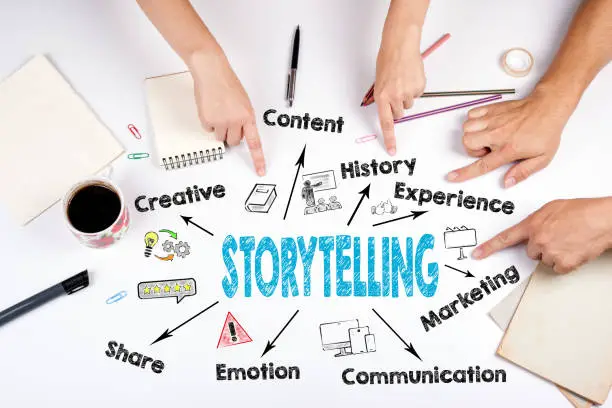Welcome to your ultimate guide on Effective Grant Writing Strategies. Whether you’re part of a nonprofit, an academic institution, or an independent researcher, securing grant funding is essential to furthering your projects and initiatives.
This post will provide you with comprehensive strategies to enhance your grant proposals, ensuring they are compelling, well-structured, and aligned with the interests of funders. By mastering these techniques, you’ll not only increase your chances of success but also gain deeper insights into the art of persuasive writing for grants.
Understanding the Basics of a Grant Proposal
A grant proposal is more than just an application for funding. It’s a persuasive document designed to convince the funding body that your project or organization deserves their financial support. The key components of a successful proposal include a clear statement of need, the objectives and goals of your project, a detailed plan of execution, and a robust budget planning section.
In essence, your proposal should serve as a roadmap, detailing not just what you plan to achieve, but how you plan to achieve it, who will benefit, and why it is important. The introduction of your proposal is crucial; it’s your first opportunity to engage the reader’s interest and empathy. Start by clearly defining the problem your project will address. This not only shows the necessity of your project but also aligns it with the potential funder’s objectives, enhancing your proposal’s relevance.
Next, outline your project’s goals in a way that is measurable, achievable, and time-bound. This clarity helps the funder understand your vision and the tangible outcomes you aim to achieve. It’s important to articulate these goals with precision as they are often the benchmarks against which your proposal’s success will be evaluated.
Following this, your method or approach should detail the specific activities you’ll undertake to meet your goals. This section should resonate with logic, showing a clear, step-by-step plan that’s practical and well-thought-out. It’s also helpful to mention any collaboration and partnerships you will engage in, as this demonstrates community involvement and resource maximization.
The budget planning section must meticulously itemize your funding needs. A transparent budget not only builds trust but also shows that your organization is thorough and capable of managing funds efficiently. Include direct costs like materials and personnel, and don’t overlook indirect costs such as administrative expenses.
1. Research Techniques: Start on the Right Foot
Effective grant writing begins long before you start drafting your proposal. It starts with meticulous research. Dive deep into understanding the goals and preferences of the funding body. Align your project’s objectives with their mission. This alignment shows that you have a vested interest in not just your own goals, but also in the goals of the grantor.
To conduct effective research for your grant proposal, start by identifying potential funders whose funding priorities align with your project’s aims. This can be done through a variety of resources such as online databases, previous grant listings, and other publications related to funding opportunities. Understanding what has been funded in the past can give you insights into what might be successful in the future.
Once you’ve identified potential funders, delve deeper into each organization. Review their mission statements, funded projects, and any feedback they provide on previous applications. This research helps tailor your proposal to meet the specific expectations and preferences of each funder. Remember, each funder is unique, and a one-size-fits-all approach doesn’t work in the world of grants.
Moreover, engaging with program officers at funding organizations can be incredibly beneficial. These contacts can provide valuable insights into the organization’s priorities and even offer feedback on your project idea. Don’t hesitate to reach out with well-prepared questions. This proactive approach not only shows your commitment but can also help refine your proposal based on direct feedback from the source.
Effective research also involves staying updated with the latest trends and data related to your project field. Utilize academic journals, reports, and other credible sources to back your proposal with solid data and statistics. This demonstrates thorough preparation and a deep understanding of the issue at hand, making your application more compelling and hard to overlook.
2. Craft a Compelling Narrative
Your grant proposal should tell a compelling story. This means developing a strong narrative development section that connects emotionally and logically with the reader. Discuss the problem your project aims to solve, and clearly outline how your approach is unique. A well-told narrative can make your application stand out in a sea of grant applications.
Crafting a narrative that resonates involves more than just presenting facts; it requires you to weave those facts into a story that highlights the urgency and importance of your project. Begin with the context—why is your project necessary? What specific issue or need does it address? Use data and real-world examples to illustrate the severity of the problem and draw the reader into the narrative.
Once the stage is set with a clear problem statement, introduce your proposed solution. Here’s where your narrative should shift from what’s wrong to what could be right. Describe your project’s goals and the innovative strategies you will employ to achieve these goals. Be specific about your methods and expected outcomes, ensuring that they are realistic and measurable.
A powerful narrative also includes testimonials or stories from community members or stakeholders who will benefit from the project. These personal stories add a human element to your proposal, making it more engaging and relatable. They serve as a tangible connection between the reader and the impact of your project, effectively illustrating the change your initiative seeks to bring about.
Furthermore, don’t forget to address potential challenges and how you plan to overcome them. This not only shows foresight but also demonstrates your project’s resilience and adaptability.
By effectively combining data, personal stories, and a clear depiction of your project’s impact, your narrative will capture the heart and mind of the reader.
3. Budget Planning: Show Them the Numbers
Budget planning is critical in a grant proposal. A detailed and accurate budget shows potential funders that you have a clear plan for how their funds will be used. It’s not just about the total amount requested; it’s about how each dollar will be allocated towards achieving project goals. Make sure to justify each expense as necessary for the project’s success.
A well-prepared budget should be both comprehensive and transparent. Start by breaking down the costs into categories such as personnel, supplies, travel, and overhead. For each category, provide a detailed explanation of why each expense is necessary. This detailed categorization helps funders understand exactly where their money is going, reinforcing trust and credibility.
When planning your budget, also consider the longevity of your project. Include estimates for ongoing costs beyond the initial funding period to demonstrate your understanding of the project’s scope and your commitment to sustainability. This aspect of budget planning is especially appealing to funders, as it shows that you’re thinking long-term and planning responsibly.
Additionally, it’s crucial to be realistic. Overestimating your budget can make your proposal seem unreasonable or poorly researched, while underestimating can raise concerns about your project’s feasibility. Use quotes from suppliers and historical data from similar projects as references to ensure your estimates are accurate and defendable.
Include a contingency fund, typically around 10% of the total budget, to cover unforeseen costs. This is not only good practice but also demonstrates to funders that you are prepared for unexpected challenges.
Ensure your budget aligns with the funding organization’s allowable costs. Some funders may not cover certain types of expenses, such as equipment purchases or indirect costs. Being aware of these restrictions and planning your budget accordingly can avoid potential issues during the funding review process.
4. The Importance of Collaboration and Partnerships
In today’s interconnected world, collaboration and partnerships can significantly enhance the credibility of your proposal. Whether it’s through local alliances or international collaborations, show how these partnerships will contribute to the project’s success and sustainability.
Forming partnerships is crucial because it demonstrates your ability to work effectively within a network and leverage additional resources and expertise. For instance, collaborating with academic institutions can provide access to cutting-edge research, while partnerships with other nonprofits might offer shared resources and enhanced outreach capabilities.
When discussing collaborations in your grant proposal, specify the roles and contributions of each partner. Clearly articulate how these collaborations strengthen your project, whether by filling gaps in expertise, increasing the potential for impact, or providing additional financial or logistical support. This specificity not only adds depth to your proposal but also shows that your plans for collaboration are actionable and well thought out.
Additionally, funders often look favorably on projects that can generate wide-ranging support, as this suggests broader validation and sustainability. It’s one thing to claim that your project is worthwhile; it’s far more compelling to demonstrate that other respected entities are willing to invest their time, resources, and reputation into making it a success.
Make sure to also address how you plan to manage these partnerships. Effective collaboration requires clear communication, aligned objectives, and structured management. Demonstrating your capacity to manage complex relationships and coordinate between multiple stakeholders can significantly boost the credibility of your proposal.
Remember, strong collaboration and partnerships do more than just enhance your project’s resources—they also amplify its legitimacy, impact, and sustainability.
5. Adhering to Submission Deadlines
One of the most practical pieces of advice is to strictly adhere to submission deadlines. Late applications are usually not considered, and missing a deadline can be a costly mistake. Mark your calendar, set reminders, and always aim to submit your application ahead of the deadline to avoid last-minute issues.
Understanding the importance of deadlines in the grant application process cannot be overstated. Submission deadlines are firm, often with no exceptions. This strict adherence is not just about following rules—it’s about demonstrating your organizational skills and respect for the grantor’s process. It shows that your project management will likely be just as meticulous and disciplined.
To ensure you’re always on time, integrate the deadline into your project timeline at the very start. Work backward from the submission date to allocate ample time for each phase of your proposal development—research, writing, revising, and gathering necessary approvals. This method helps you visualize the time you have and adjust your workload accordingly.
Moreover, consider potential delays that could impact your submission. These might include technical difficulties, delays in receiving information from partners, or unexpected revisions. Building in buffer time for these unforeseen circumstances can save you from panic as the deadline approaches.
Additionally, take advantage of any opportunities to submit drafts for feedback if offered by the funding organization. Early feedback can be incredibly valuable and improve the quality of your final submission. However, this also requires you to have substantial parts of your application ready well before the actual deadline.
Finally, make it a practice to review all components of your application multiple times. Errors, inconsistencies, or missing documents can undermine even the most compelling grant proposals. A final check to ensure everything is complete and well-organized can make a significant difference.
6. Meeting Evaluation Criteria
Understanding the evaluation criteria of your grant application is crucial. Tailor your proposal to meet these criteria explicitly. Whether it’s demonstrating impact measurement, sustainability planning, or innovation, make sure that each criterion is thoughtfully addressed and backed by evidence.
Each funding organization has specific evaluation criteria that guide how they assess proposals. These criteria might include the project’s relevance to the funder’s mission, the feasibility of the project plan, the sustainability of the project outcomes, the capacity of your organization to execute the project, and the overall impact. Knowing these criteria inside and out can give you a significant advantage.
Start by carefully reading the grant guidelines and any scoring rubrics provided by the funder. Pay close attention to the language used in the criteria—terms like “innovative,” “scalable,” or “community-based” can hint at what the funder values most. Reflect these terms and concepts back in your proposal to show alignment with their priorities.
Incorporate specific examples and data to demonstrate how your project meets each criterion. For instance, if one of the criteria is the expected impact, provide clear metrics on how many people will benefit from your project, or what measurable change you anticipate. This shows not only that you understand the funder’s goals but also that you are prepared to deliver tangible results.
Moreover, don’t shy away from highlighting any unique aspects of your project that might meet or exceed the funder’s expectations. If your approach has a novel component or you’re leveraging new technology, emphasize these elements as part of your argument for why your proposal should be funded.
Lastly, ensure your proposal is clear and well-organized. A logical flow that systematically addresses each evaluation criterion makes it easy for the reviewers to see that your project checks all the boxes. Consider using headings or bullet points to directly align parts of your proposal with the evaluation criteria, making it straightforward for the evaluators to assess your application.
7. Sustainability Planning: Looking Ahead
Sustainability planning is often a key component of grant proposals. Funders want to know that their investment will lead to long-term impact. Discuss how your project will continue to operate and achieve its goals even after the grant period has ended.
When crafting your sustainability plan, it’s essential to demonstrate a clear and realistic path for the future of your project. This involves outlining how you will maintain funding, manage resources, and continue to deliver benefits over time. Start by discussing any plans for future funding once the grant money has been spent. Are there other grants you can apply for, or do you have commitments from other donors? Maybe there’s potential revenue from services or products your project will generate.
Another crucial aspect of sustainability planning is building capacity within your organization and among stakeholders. Explain how you will use the grant to develop skills, tools, and systems that will remain in place beyond the funding period. This might include training staff and volunteers, investing in durable technology, or establishing partnerships that provide ongoing support.
It’s also important to show how the project’s outcomes will be integrated into broader community or organizational practices. Will the results of your project influence policy, inform best practices, or lead to scalable models that others can adopt? Demonstrating this kind of integration can significantly strengthen your proposal by showing that the impact of the grant will extend beyond the direct beneficiaries.
Lastly, be sure to address how you will measure and report on the sustainability of your project. Funders are increasingly interested in not just what you plan to do but how you will monitor and evaluate the ongoing success of your initiatives. Detail your strategies for tracking progress, assessing effectiveness, and making adjustments as necessary.
Conclusion:
We hope these strategies will empower you and your organization in crafting more effective and successful grant proposals. However, mastering grant writing and nonprofit management is an ongoing process, and having the right resources at your disposal can make all the difference.
If you’re looking to take your skills to the next level, consider exploring our range of grant writing books and nonprofit management resources. These tools are designed to provide you with deeper insights and advanced techniques that can transform your approach and increase your success rates.
For those who are looking for personalized guidance and expert advice, we invite you to sign up for our Grant Writing Academy Mentorship programs. Whether you’re just starting out or looking to refine your skills, our tailored mentorship can help you achieve your goals. Choose from:
- 3 months for $500
- 6 months for $800
- One year for $1,300
Each program offers intensive support and direct coaching from experienced professionals in the field. To enroll or learn more, simply send an email with the subject line “Mentorship” to grantwritingacademyconsult@gmail.com.
Take the next step in your grant writing and nonprofit management journey today, and let us help you unlock your full potential!
Frequently Asked Questions







Informative write-up!
I honestly liked the way you presented this topic.
It’s so good to come across practical information like
this on the web.
Thanks for putting this together.
Looking forward to reading more!